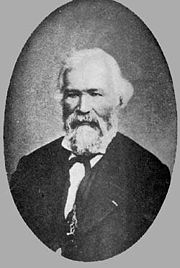Edmond Tulasne's Human Design Chart
3/5 Emotional GeneratorFrench botanist whose specialized study was the science of mycology. His microscopic investigation of fungi, particularly parasitic species, contributed much to the understanding on the complexities of their nature and development. He is credited with introducing the concept of “pleomorphy” in regard to fungi. Pleomorphy states that an individual fungus, growing in different substrates can have dramatically different forms. In 1853 he introduced his views on the reproduction cycle of Claviceps purpurea (ergot).
A number of mycological species, as well as the genera Tulasneinia and Tulasnella (family Tulasnellaceae) are named after him. He is credited with providing classification taxa for the following genera: Crucibulum, Glomus, Sebacina, Terfezia, Tilletia and Hypomyces (the latter genus with Elias Magnus Fries).
He also produced some important works on flowering plants. For example, in 1855, he published two papers on the magnoliid family Monimiaceae, in which he included what are now the Lauralean families Siparunaceae and Atherospermataceae.
Tulasne published over 50 scientific articles during his career. Some of his best work was done in collaboration with his brother, Charles Tulasne (1816–1884), such as “Fungi hypogaei” (1851) and the three-volume “Selecta fungorum carpologia” (1861–1865). The latter work is known for its superb detailed illustrations, being created by Charles Tulasne.
Many of his works were published under the Latinized name “Ludovicus-Renatus”.
As a young man he assisted botanist Auguste de Saint-Hilaire (1779–1853) with studies of Brazilian flora. From 1842 until 1872 he worked as a naturalist at the Muséum national d’histoire naturelle in Paris. In 1854 he succeeded Adrien de Jussieu (1797-1853) as a member of the Académie des sciences. He died in Hyères on 22 December 1885, age 70.
Link to Wikipedia biography
Discover More Famous People
Browse and analyze over 55,000 public figures and celebrities.
Ra Uru Hu
5/1 Manifestor
Martha Stewart
4/6 Manifestor
David Lynch
4/6 Generator
Barack Obama
6/2 Projector
Steve Jobs
6/3 Generator
Vladimir Putin
5/1 Manifestor
Kim Kardashian
3/5 Generator
Michael Jackson
1/3 Projector
Marilyn Monroe
6/2 Projector
Ariana Grande
2/4 Projector
Oprah Winfrey
2/4 Generator
Johnny Depp
2/4 ManifestorWhat is HumanDesign.ai and how does it work?
Curious what makes Edmond Tulasne tick? HumanDesign.ai instantly maps their exact birth data into a fully interactive clickable bodygraph chart, letting you hover or tap every center, channel, and gate for plain-language explanations. Bella, the platform’s built-in AI guide, adds context in real time, translating complex mechanics into everyday insights so you can see how Edmond Tulasne’s strengths, challenges, and life themes play out on-screen.
The same tools are waiting for you. Generate your own Human Design Chart in seconds, open a library of 2000+ suggested questions, and chat with Bella as often as you like to decode your design, daily transits, and even relationship dynamics.
Want to compare energies? Save unlimited charts for friends, family, or clients, then ask Bella to reveal compatibilities, composite patterns, or coaching tips, all in one conversation thread.
Start free with core features, or unlock our Personal and Pro plans for deeper dives: unlimited Q&A, celebrity chart search spanning 55,000+ public figures, white-label PDF reports, branded content generation, and a professional profile with built-in booking for practitioners. Whether you’re exploring your own potential or guiding others, HumanDesign.ai delivers an ever-expanding toolbox of AI-powered insights—no spreadsheets, no jargon, just clarity at your fingertips.
Ready to see yours? Signup for FREE today!

